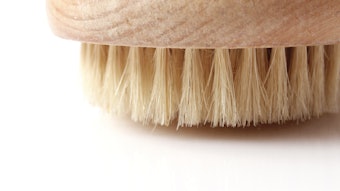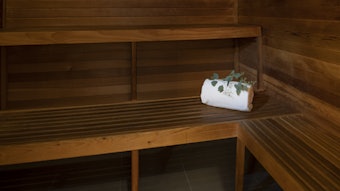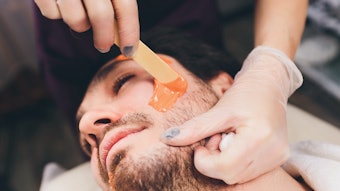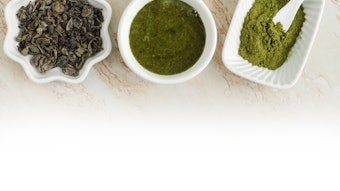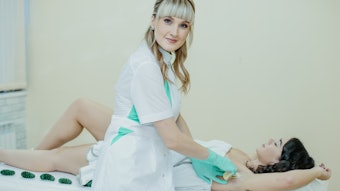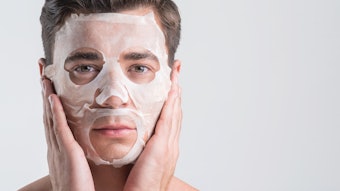
The aging of the neck is the frequent thought of many women and men when they look in the mirror every morning. Nora Ephron even observed this struggle with aging for women specifically in her book, I Feel Badly About My Neck: And Other Thoughts on Being a Woman. So many of these clients want to have treatments and products to improve the appearance of these damaged areas, which are so hard to disguise and conceal.
Neck areas, as well as the chest and décolleté, seem to be among the first areas of the face and body to show signs of skin aging, and some the hardest to improve with treatment.
The skin of the neck is not supported by other structures like the skin of the face. Facial skin has fat layers and layers of multiple muscles under it to serve as a “foundation” and “anchor.” Neck skin does not have the same support.
Neck skin is physically thinner than facial skin, making it more sensitive than other facial areas. It also has fewer sebaceous glands, making it more susceptible to dehydration and potentially impaired barrier function.
Intrinsic Aging of the Neck
Intrinsic signs of skin aging are those that are caused by the natural aging process, of which we have little or no control. Genetic and hormonal activity, which can vary from person-to-person, also can affect skin cellular function and repair of the skin tissues. Gravity constantly pulling downward on the skin, slowing of the skin renewal process, stretching of the skin due to skin movement and repeated motions are all examples of intrinsic aging appearance causes.
Because of its constant mobility in moving the head, the neck is definitely one of the most “worked” areas of the face and body, and definitely susceptible to gravity’s effects. Constantly turning, extending, twisting, and bending, the skin of the neck is repeatedly being stretched, hence its status as the most susceptible area to expression and movement-related elastosis and signs of skin aging. Moving and positioning the neck during sleep can also contribute to elastosis.
The muscles of the neck are also part of the signs of neck aging. The sternocleidomastoid muscles are the “cord-looking” muscles that protrude from the front of the neck, and are most noticeable when the head is turned. These muscles run from the chest to the mastoid area, behind the ears. With age, they become more pronounced and are visible even when the head is still and looking forward. Damaged skin surrounding the muscles may “hang” and make the appearance worse.
The platysma muscle is a large flat muscle that runs from the upper chest and attaches to the skin of the lower face and mouth areas. The platysma muscle stretches the skin as it moves and eventually is what is responsible for “turkey neck,” as the muscle stretches and loosens over time and also pulls on the skin over it. Because of the muscle sagging and protrusion, this is a difficult area for esthetic treatment, as skin products do not affect the sagging muscle. Surgical correction is the only realistic long-range treatment.
Extrinsic Aging Factors
As with the facial skin, the neck and décolleté are both constantly sun-exposed areas of the body. The upper chest and neck skin is often more damaged than the facial skin, as it is less likely to be cared for until the environmental damage is already done. Like any area of skin routinely exposed to sun, inflammation caused from reactive oxygen species (ROS) causes a cascade of biochemical reactions resulting in the breakdown of collagen and elastin fibrils, and also hyaluronic acid in the skin that is important for moisture retention. It also affects and alters DNA in the skin cells, which can lead to skin cancers and abnormal skin growths.
The barrier function of the skin is likely to be impaired due to lack of protection against UV rays from the sun interfering with skin’s ability to retain moisture. This can affect the skin’s natural ability to protect itself, as well as contribute to wrinkling and poor skin texture. Telangiectasias (distended capillaries/couperose) is also likely to occur. Dryness from exposure to extreme temperatures and wind dries out the skin surface, further contributing to the damage. The long-term cumulative result of failure to use sun protection on a daily basis is splotchy, hyper and hypo-pigmented, crepey, wrinkled neck and décolleté skin with elastosis (sagging). Weight gain and loss can also significantly contribute to elastosis in the neck, especially if the skin is already environmentally damaged.
Neck and Décolleté Aging
Damage from sun exposure can show up in the neck area as early as 20 years of age in those who live in sunny states such as Florida and California. Hyperpigmentation and telangiectasias on the neck, mottling (speckled hyperpigmentation or sun freckles) can show up in the 20s and 30s. Generally, the skin is also dehydrated resulting in multiple fine lines, wrinkles, rough texture and a “crinkled cellophane” look to the skin, especially on the décolleté.
Depending on the amount of cumulative sun exposure, the neck may have severe hyperpigmentation, diffuse redness and multiple “networks” of telangiectasias. Poikiloderma of Civatte is the name for a horseshoe-patterned discoloration of the sides of the neck with a lighter area on the neck just under the chin. This pattern of severe sun damage is caused by the shadowing of the skin under the chin during repeated sun exposure. There is nothing to “shield” the sides of the neck, which results in the hyperpigmentation and vascular discoloration. Poikiloderma is difficult to treat and may take months or years to see change with non-medical esthetic treatment. Pigment and vascular laser treatment is much more efficacious.
Treatment and Prevention
Prevention is always the best and most effective treatment for any skin condition.
Sunscreen. Daily use of sunscreen is imperative, even when not in the direct sun. Sunscreen should be at least an SPF 30 and broad spectrum tested. It should be applied every morning. If planning to be in direct sun, apply 20 minutes before exposure to all areas and reapply every 1- 2 hours. A water-resistant product should be used if at the beach or swimming.
Antioxidant. A multi-antioxidant serum should be applied before the sunscreen. Multi-antioxidant is important, as a mix of antioxidants will neutralize more types of free radical (ROS) activity triggered by sun exposure. The theory here is to stop the cascade of ROS before it produces damaging breakdown enzymes that destroy collagen and elastin fibrils. Examples of an antioxidant mix might include vitamin C, vitamin E, green tea, grapeseed extract, resveratrol, niacinamide, etc.
Ceramides. These incredibly effective fatty structures patch holes in the outer epidermal layers, helping the skin retain much more moisture. This helps with smoothness, texture, fine lines and wrinkles, and also makes the skin function in a healthier way. Look for ceramides in serums, moisturizers and even some sunscreens!
Corrective Treatment
Corrective treatment for sun-damaged neck and décolleté skin is extremely long-range. Because the skin is often neglected for so long during the years of often deliberate tanning efforts, or use of UV tanning beds/booths, there is much to correct!
All clients with this degree and type of damage should also be referred to a dermatologist for regular skin cancer checks. These are prime areas and conditions for skin cancer development.
Alpha Hydroxy Acids (AHAs). Used daily, a gentle AHA serum applied before other treatments will help to shed dead, dried, often pigmented cells and is a great first step (besides sun care and sunscreen) in helping the sun-damaged neck and décolleté. Non-aggressive (30% or less, pH 3.0 or higher) AHA peels also can help after the skin is acclimated to AHA.
Ceramides. These should be used daily, as noted previously.
Antioxidants. These should also be used daily, as noted previously.
Peptides. Palmitoyl pentapeptide-4, trifluoroacetyl tripeptide-2, palmitoyl tripeptide-38, or others can be beneficial in helping restore the look of elasticity and smoothness.
Spa treatments. Treatments may include AHA peels, LED treatments using red light, microcurrent treatments to help with elasticity and regular moisturizing treatments.
Client Communication
Make sure you have a thorough educational session with your client to make sure the client has realistic expectations and understand that desired results will take time. The skin did not get this way overnight!
Clients must understand that sun exposure is what caused this condition, and they cannot continue deliberate sun exposure or use of UV tanning if they expect to see any results. They must use sunscreen daily and not just when outdoors. Damaged areas can and will improve with regular treatment, if the client is diligent.
Mark Lees,Ph.D., M.S. is an award-winning speaker, master clinical skin therapist and product developer of Mark Lees Skin Care products. He is the author of Skin Care: Beyond the Basics the Skin Care Answer Book, and his latest book Clearing Concepts: A Guide to Acne Treatment.




